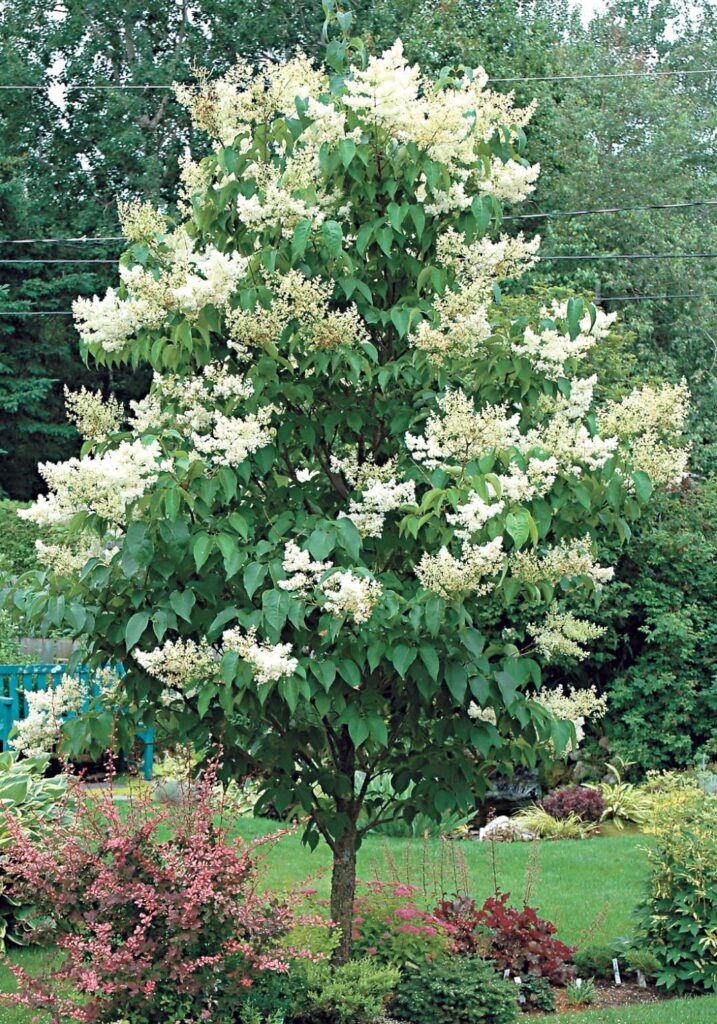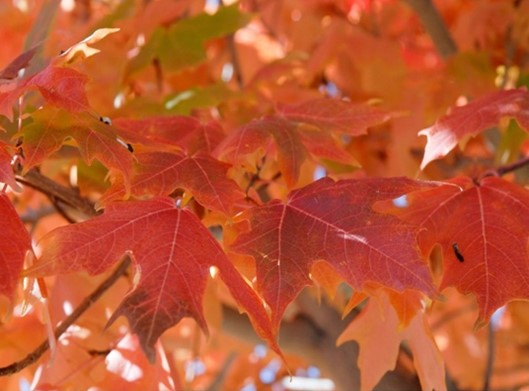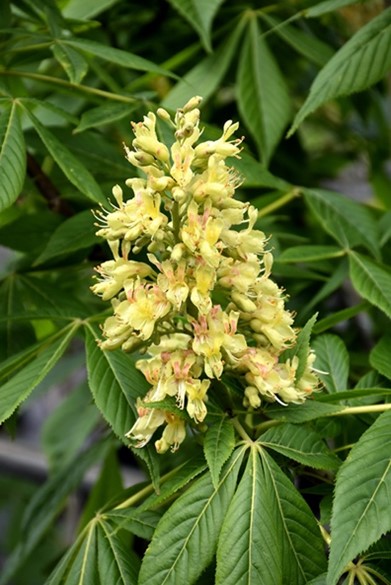So Many Choices!
- 2024-07-08
- By mkirk
- Posted in Horticulture, The Garden Buzz
By Mae Lenoir Rauen, Colorado Master Gardener Emeritus

Are you thinking about planting a tree? Do you need some shade for the children’s play area or maybe a replacement for the spruce monster you had removed? Choosing the right tree for the location is only part of the decision-making process. Understanding the importance of correct planting procedures is essential for success.
In locating the tree, keep in mind mature height and spread and the proximity of buildings and other structures such as fencing or play equipment. That monster spruce was removed because it was planted too close to the house. That cute little tree may look just right off the corner of the house for a few years only to become a problem when it grows big enough to rub against the siding. You don’t want to spend money now to purchase a tree, nurture it for a few years, and end up spending more money to have it removed when it grows too large for its space. Many of the larger evergreen trees are simply too big at maturity for the average home lot.
There is an abundance of information online for tree planting. Be sure to follow Colorado-specific guidelines. Once you have chosen a location for the new tree and selected an appropriate tree, follow these basic steps and seek details online. A properly dug planting hole is an extremely important step. A common mistake is to dig too deeply, thinking the bigger the hole, the better. Instead, you will want to make a wide, shallow planting hole so the root ball sits on top of undisturbed soil. Place the tree in the hole correctly, backfill per instructions, water, and stake if necessary. During the establishment phase check the edge of the planting area every few days. Apply water when the outer rim of the backfill is dry. See CMG Garden Notes #633 for help with planting. Garden Notes #634 lists everything you need to know about staking and underground stabilization.
There are so many wonderful choices. For a comprehensive list of recommended trees, including trees NOT recommended, see the recently updated Front Range Tree Recommendation List. This list will get you started on your search. You will find the following popular choices on the list: (small) Japanese Tree Lilac (Syringa reticulata), (medium) Caddo Maple (Acer saccharum), and (large) Ohio Buckeye (Aesculus glabra).
Japanese Tree Lilac is ideal for group plantings but looks great as a single specimen planting. There is a ring of Japanese Tree Lilacs planted around a unique sculpture/fountain at the Regis Arboretum in Denver. View the map online at regis.edu or see the arboretum kiosk in Lot 4 on Lowell Boulevard, north of Regis Boulevard. It is best to go see the lilac trees in bloom in June, but a visit to the arboretum at any time during the growing season will give you lots of ideas for choosing trees. Keep in mind the arboretum location is unique; some of the trees growing there will not do well in other places.

Caddo Maple is a great tree for a medium-sized yard. This sugar maple is native to Kansas and Oklahoma and will tolerate alkaline soil and hot weather, two conditions very typical of most Colorado front range gardens. These can be seen at the arboretum on the CSU Campus. Information on this planting is found in Dependable Landscape Trees by Sarah Shaub, M.S. and James Klett, Ph.D. Again, a tour of this arboretum will help greatly in your selection process.

Ohio Buckeye needs a good-sized yard when mature. It should not be planted where children or pets might be attracted to the shiny nuts as they are toxic. Fortunately, the nuts are encased in a spiny husk that is unpleasant to handle. Buckeye leafs out early in the spring and blooms terminal clusters of creamy yellow flowers. There are several buckeyes planted along Gallup St. in Littleton across from the Littleton Museum in Gallup Park. Interspersed with Oak trees this stand is beautiful and provides morning shade for the playing fields. Plant Select has introduced a new tree named the Jimmy K (Aesculus glabra ‘Dr. Klett’) in honor of Dr. James Klett, retired CSU Professor, to honor his many contributions to Plant Select and to celebrate his career. Typically, Ohio buckeye has a vibrant yellow fall color. Jimmy K turns a spectacular red in fall. This tree will be available for purchase in several years as nurseries are growing them now. See plantselect.org.
Enjoy the search and plant carefully. Learning how to avoid potential problems with proper selection, proper siting and proper planting will enhance the pleasure of watching your tree grow throughout the years.
Horticulture Resources
- Garden Buzz Archives
- CSU Extension Resources
- Colorado Master Gardener Program
- Foothills to Plains Native Plant Master Program
- Native Bee Watch Community Science Program
- The Co-Hort Blog
- PlantTalk Colorado
- Soil Testing
- Plant Select
- Emerald Ash Borer
- Japanese Beetle
- Colorado State Forest Service
- Ask an Expert


